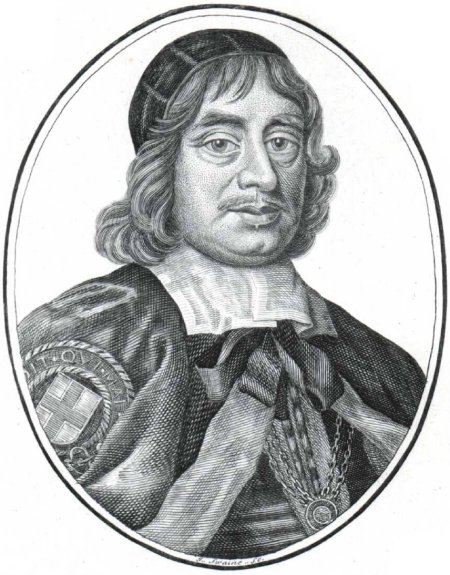Bishop Seth Ward Almshouse Trust
HISTORY
Seth Ward was born in the town of Buntingford, in 1617, in the parish of Aspenden.

He received his early education at the Buntingford Grammar School (now Layston Court).
He became exceptionally skillful in mathematics. On the recommendation of Rev. Dr. Alexander Strange (the Vicar of Layston) he was admitted to Sidney Sussex College, Cambridge (at the age of 15.) He began his studies there on December 1st, 1632.
He achieved his Bachelor’s degree in the spring of 1637, and his Master’s degree in 1640. That same year, he became a mathematical lecturer at Cambridge University.
At this point in history,armies loyal to King Charles 1 and parliament faced off in 3 civil wars.Ward (along with other scholars of the day) refused to sign the solemn league and covenant (as required by the parliamentarians). Since his refusal meant he could no longer hold official office, he returned to Aspenden and became personal tutor for the sons of Sir Ralph Freman of Aspenden Hall.
Seth Ward’s fame as a mathematician was well known, and he was appointed a “Gentleman Commoner of Wadham College, Oxford” (without having to sign the covenant). He took up residence there in April, 1650. (The room he occupied there was later to become his friend’s: Christopher Wren.)
Ward’s lectures on astronomy and mathematics made him an authority on the subject and he was incorporated as an MA of Oxford. In 1654, he gained a Doctor of Divinity degree and became Principle of Jesus College, Oxford.
In 1656, Ward became President of Trinity College, Oxford. (He held that appointment for four years.)
Throughout this period, Seth Ward met regularly in London with a group of philosophers, discussing scientific matters. Many of the meetings were attended by King Charles II (recently restored to the throne.)
Seth Ward was elected to the office of Bishop of Exeter in July, 1662. In May 1668, he became Bishop of Salisbury. At that time, the cathedral was in much need of repair. Ward requested his friend, Christopher Wren, to architecturally oversee the necessary work. (This included work on the famous tower.) Much of the work, Ward paid for himself.
Ward did not confine his generosity to Salisbury cathedral alone. He also built the Matrons’ College Hospital, providing homes for the widows of old Sarum’s diocese’s vicars.
Seth Ward was always mindful of the place that he was born, and in 1684 built the Almshouses in Buntingford. The Almshouses may well have been designed by Christopher Wren (although equally accomplished, although less-renowned architect, Robert Hooke, is also suggested.)
On completion, Ward endowed them with fee- farm rents payable by various properties in the counties of Leicestershire and Lincolnshire. He also set up the constitution. The original trust document bearing his signature (along with the other trustees) is safely preserved at Hertford County Hall, (he also left endowments for apprentices for Buntingford boys and the local grammar school.)
Bishop Seth Ward was staying in London in 1689, when he died on the 6th of January. His body was taken back to Salisbury, where it was buried in the cathedral in the south-east transept. High on the wall of the transept is his memorial (surmounted by his bust, with mitred head.)
Home
About Us
Eligibility
History
Gallery
Bishop Seth Ward commemorated in Buntingford